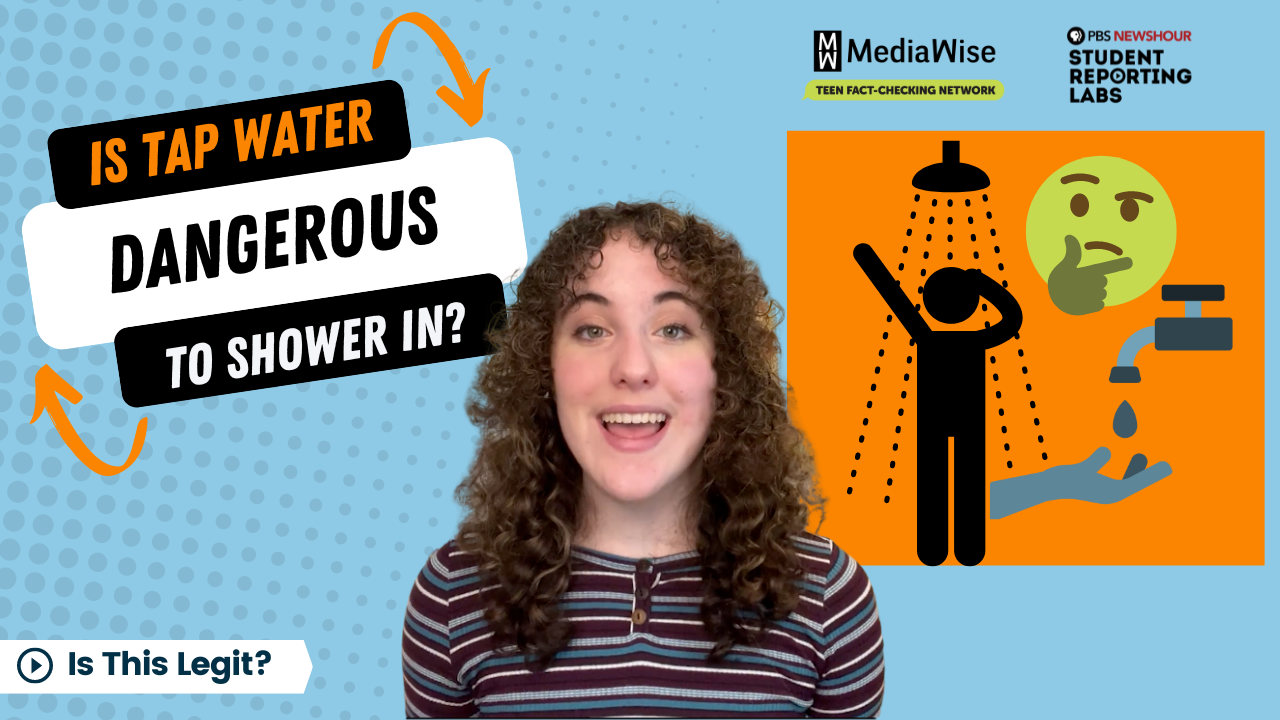What’s the longest you’ve ever gone without a shower? According to this TikTok — which talks about the “dangers” of showering in regular tap water — the longer, the better.
The video claims that showering is dangerous because the chlorine in tap water is absorbed through your skin. Having showered all my life in tap water, this seemed a little suspicious.
Here’s how we fact-checked it.
Examine the source
This TikToker urges people to “invest in a shower filter.” Anytime you’re unsure about a claim you see online, your first step should always be to examine the source.
I looked at his profile, which has tons of other videos on the supposed dangers of regular tap water. I also found his Linktree, which is filled with water filter promotion sites, in his bio. It looks like he is a distributor for a company called Kangen Water Systems, which sells pricey water filters.
Since his entire platform is trying to promote water filters it is clear that he isn’t sharing this video just for science.
Find the original clip
Since his TikTok shares a clip from a news video, I searched “showering with chlorine dangers” on YouTube. I also added the keywords “morning blend,” which I can see in the background of the clip. The original video clip appears first. It’s from a morning news show on KGUN-TV in Tucson, Arizona.
The man speaking is Derk Chamberlin, who is associated with H2O Concepts, a company that sells water filters. Since he’s talking about chlorine in showers and sells a product related to that, we can already tell there is a bias.
Keyword search
But is there any truth to Chamberlin’s claim that showering in chlorinated water is harmful? He says that according to the Environmental Protection Agency, we shower with 300-600 times the recommended chlorine level.
I did a keyword search for “EPA shower water chlorine” and I found this research from the EPA that says, “Showering with chlorinated water poses little risk because monochloramine does not easily enter the air.” Monochloramine is a combination of chlorine and ammonia that has been used as a disinfectant in tap water since the 1930s.
Lateral reading
That sounded pretty reassuring, but I still wanted to see what else the internet has to say. Here’s another tip: Leave the platform where you find a claim and open up other tabs so you can read multiple credible sources and compare what each says. We call this lateral reading.
I did a keyword search for “showering with chlorinated water.” The first 10 things I found were from websites or blogs that sold similar filter products. You need to skip over those. This is called click restraint. In other words, don’t just click on the first website you see. Instead, keep scrolling until you find something you trust.
I eventually found a reliable source. The Minnesota Department of Health has a great resource explaining chlorinated water in your home. It says that chlorine in tap water is not absorbed into your body through the skin and it does not cause any breathing problems. In fact, there is much less chlorine in your daily shower than in a swimming pool.
Now, let’s look more into chlorinated water. I found this Centers for Disease Control and Prevention article explaining why chlorine is put in water. It says, “Using or drinking water with small amounts of chlorine does not cause harmful health effects and provides protection against waterborne disease outbreaks.”
Rating
Not Legit. The claim that showering with chlorine is dangerous is not true. We disproved it by finding credible health agency sources on chlorinated water and by discovering bias in the TikToker and the man on the morning news show.
The next time you hear someone talking about a suspicious claim, ask yourself some questions. First, who are they? Second, what are they associated with? And finally, where do their “facts” come from? This way you can figure out if someone is just trying to educate you or pressure you into buying a product.
NOTE TO TEACHERS: This article is featured in a free, one-hour lesson plan that teaches students how to figure out if someone is giving them legit information or trying to sell them a product. The lesson is available through PBS LearningMedia, and includes a lesson summary and a handout, among other resources.






